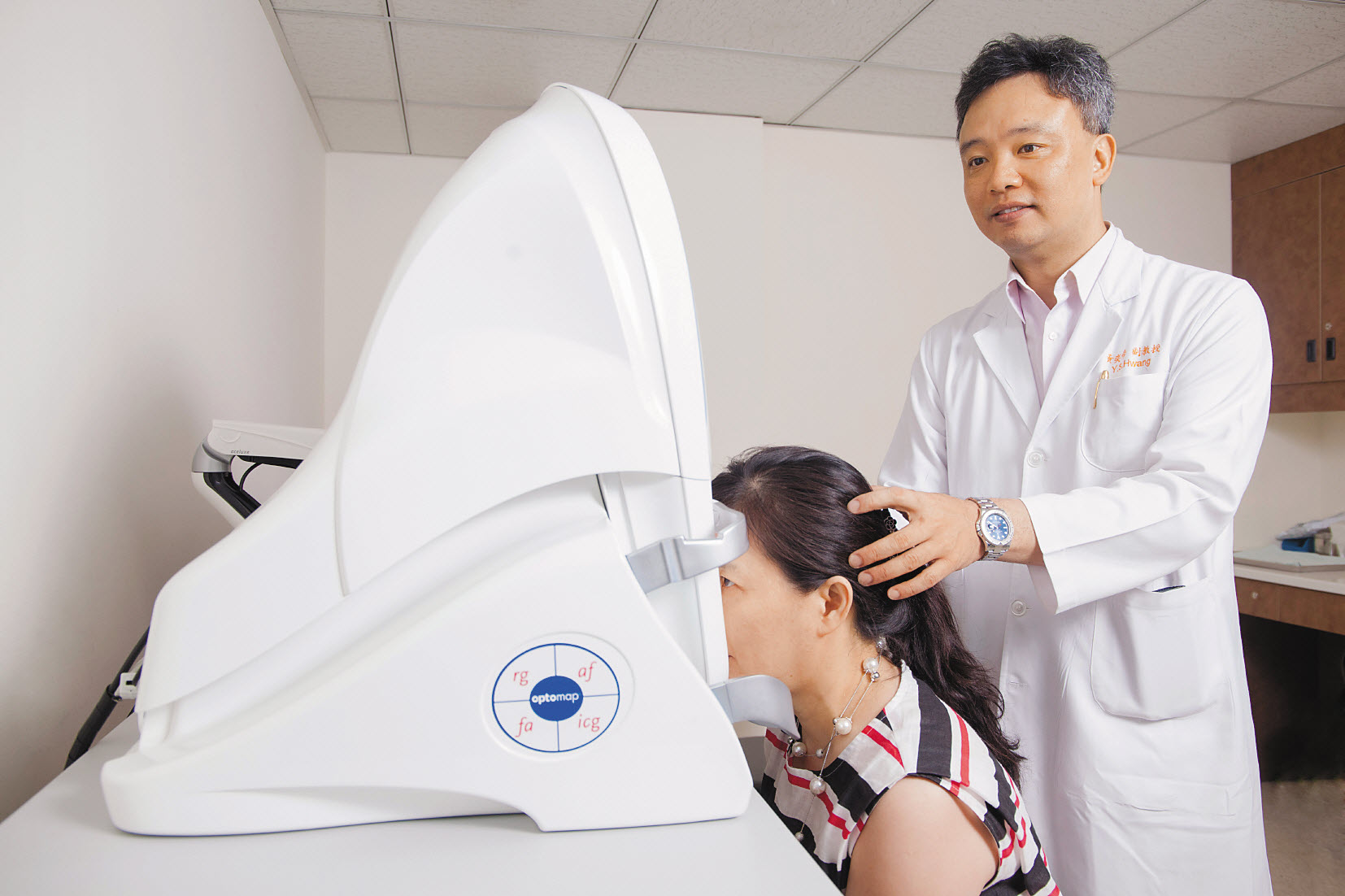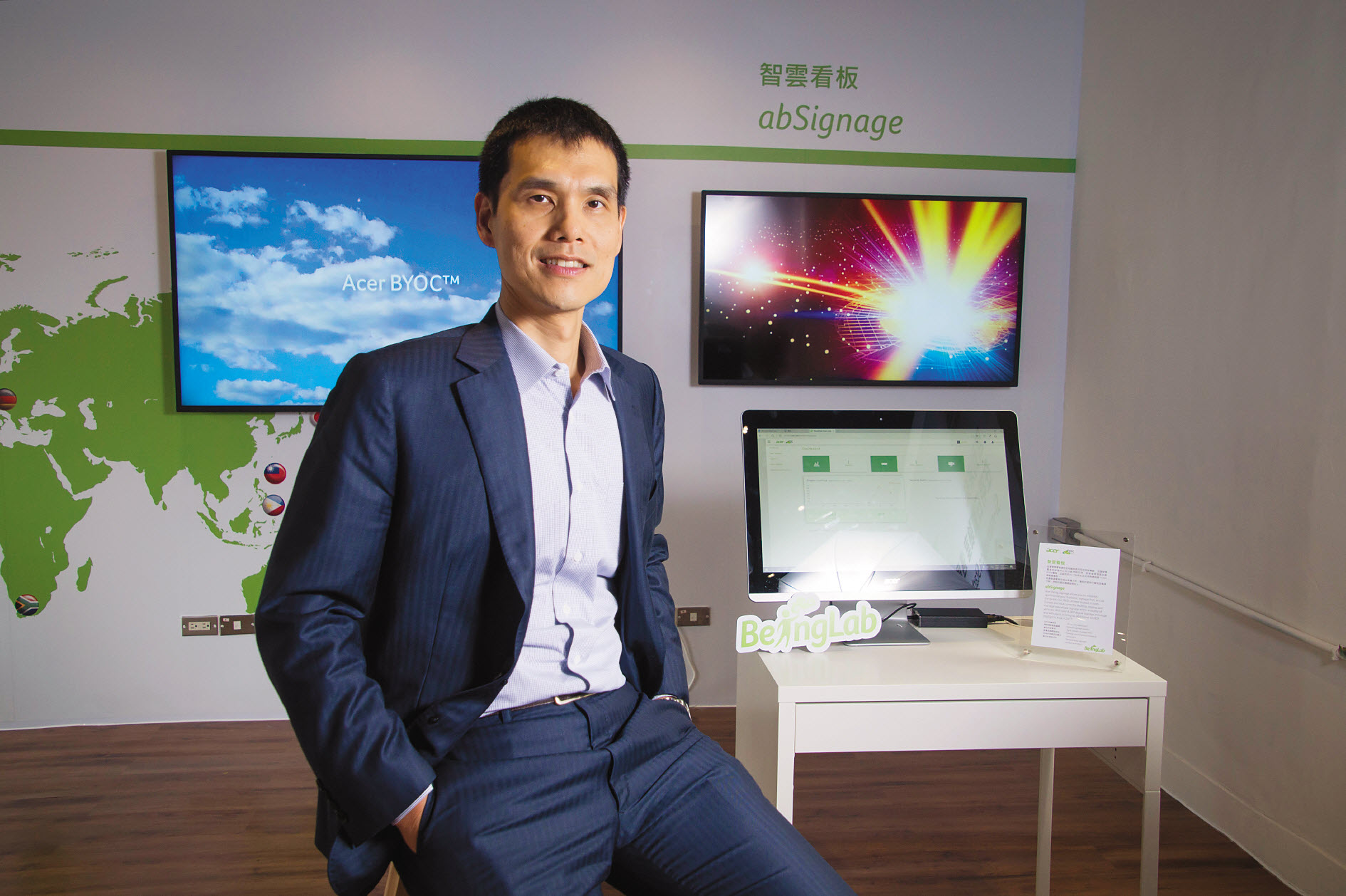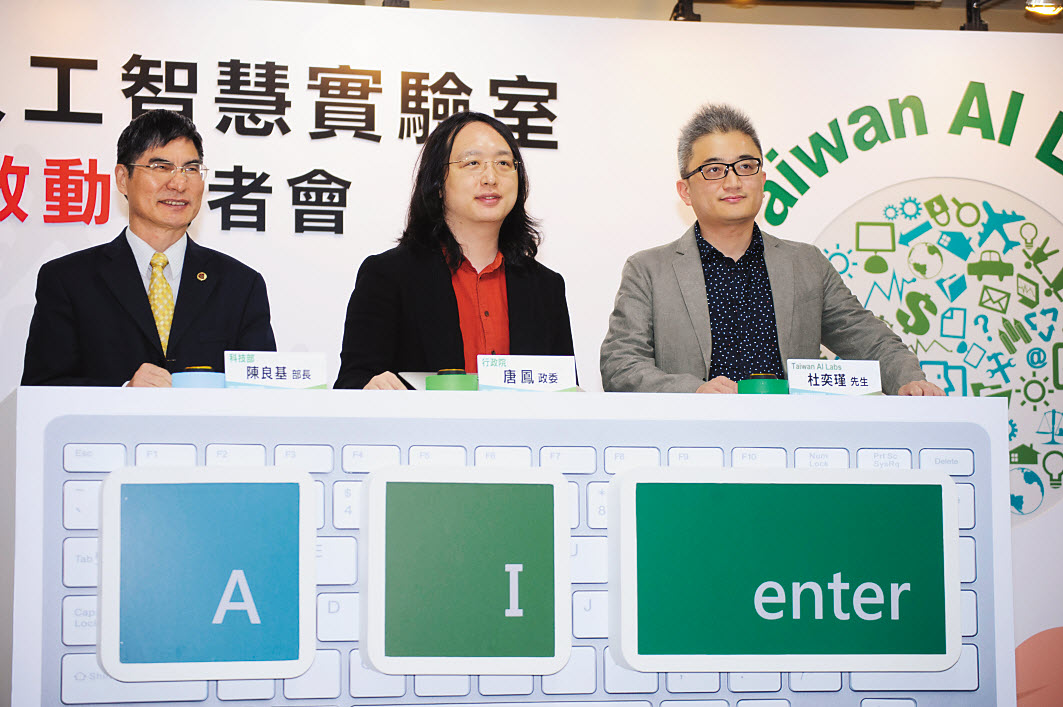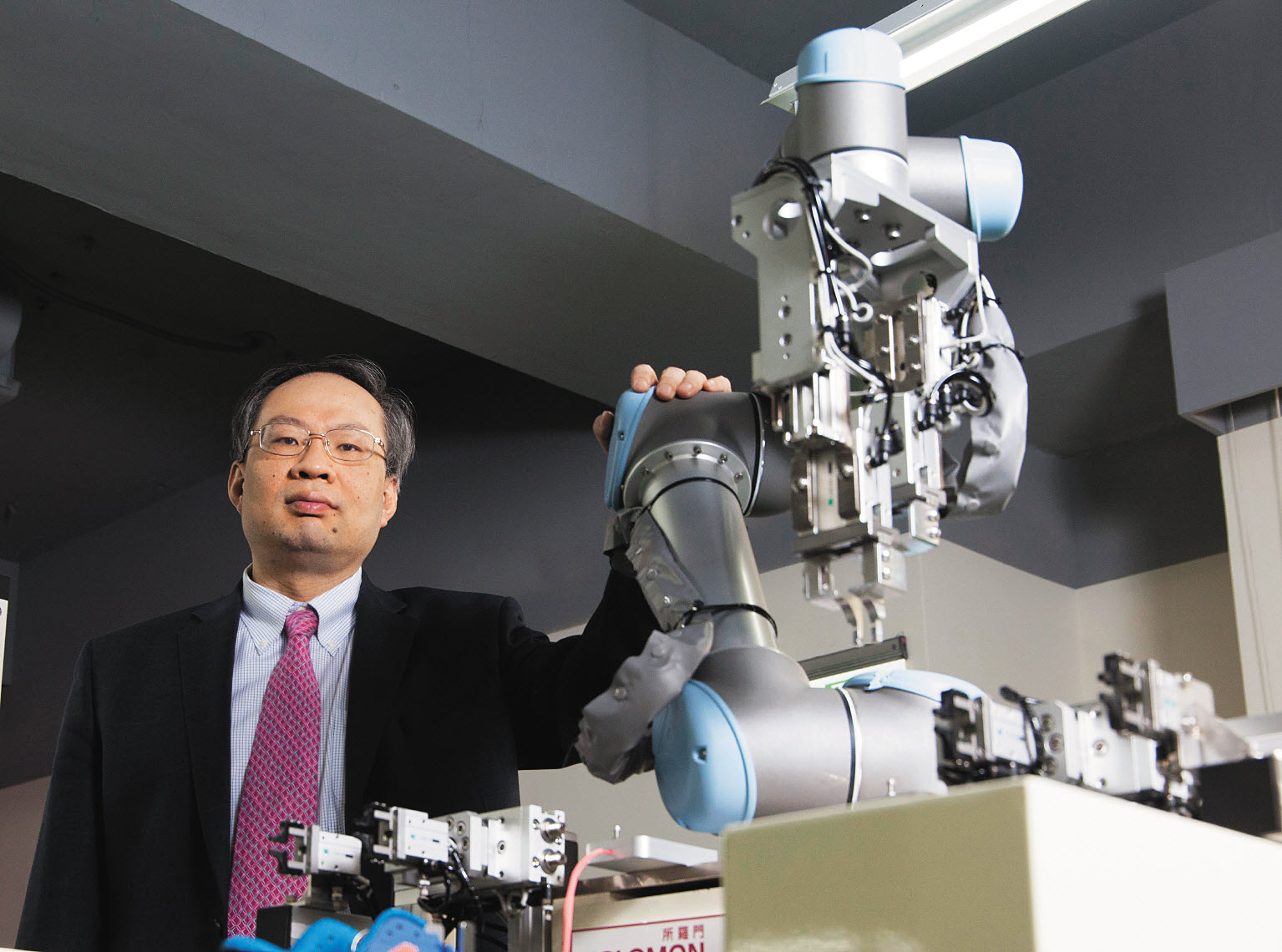2017 Top 2000 Survey
AI: A Wave Taiwan Must Ride

Source:Zi-Jia Liu, Shutterstock
Artificial intelligence is poised to explode, much like the internet in the 1990s. But with no clear market and no advanced research, how can Taiwan find its niche in this global tsunami and what will it need to do to strike success?
Views
AI: A Wave Taiwan Must Ride
By Yi-shan ChenFrom CommonWealth Magazine (vol. 622 )
Chang Gung Memorial Hospital physician Hwang Yih-shiou often urges patients who spend a lot of time on their smartphones to rest their eyes, but he’s ignored his own advice recently, studying his iPad whenever he can, whether waiting to go somewhere or in between seeing patients.
Hwang’s iPad obsession has nothing to do with playing games or catching up on his favorite drama. Instead, he’s using it to classify more than 10,000 fundus photographs (which show the interior surface of the eye) collected by the Industrial Technology Research Institute (ITRI) legally online.
Hwang’s efforts are part of a groundbreaking artificial intelligence project engineered by the Linkou branch of the hospital and the ITRI. The project hopes to use the national health insurance’s extensive medical image database to create a system that can detect “diabetic retinopathy” early and help diabetes patients take early prevention measures that lower the risk of blindness.
 Chang Gung Memorial Hospital ophthalmologist Hwang Yih-shiou is hoping to develop an “AI doctor” that can detect early signs of eye disease in diabetes patients to lower their rate of blindness.
Chang Gung Memorial Hospital ophthalmologist Hwang Yih-shiou is hoping to develop an “AI doctor” that can detect early signs of eye disease in diabetes patients to lower their rate of blindness.
It may sound like an advanced, tech-savvy system, but hard work has been needed to get the system off the ground because “my colleague and I have to first classify the photos,” Hwang says.
Hwang and another physician look at each photo and sort them into which ones show pathological changes in diabetes patients’ eyes and which ones don’t and identify where the problem has occurred. When the sorting operation is completed, a fundus camera furnished by ITRI’s Biomedical Technology and Device Research Laboratories and Medimaging Integrated Solution Inc.’s image recognition and deep learning technology will team up to further study the images.
The hospital and ITRI expect the process to result in a remote diabetic care system about four years from now.
“You can’t do this any faster. You need professional physicians to do it because if there’s any mistake, it will affect the accuracy of the artificial intelligence system in the future,” Hwang says of the sorting process when asked if students working part-time could do it.
Hwang, who also heads the hospital’s “Academic-Industrial Collaboration Office,” foresees the day when the project will enable diabetes patients to photograph themselves at home and upload it to the cloud and have an AI doctor offer a diagnosis. Real physicians would then be notified when signs of disease appear.
Hwang believes that medical workers could care for five times as many patients as they do now with the support of the AI doctor.
“We could also offer intelligent health education and provide accurate information at appropriate times” to help physicians stay on top of a patient’s condition, Hwang says.
Asia the Key Player in 4th Industrial Revolution
Founded on the Internet of Things and big data, artificial intelligence focuses on productive behavior through a progressive series of judgments. The 2016 World Economic Forum went so far as to call artificial intelligence the core of the “4th industrial revolution” and predicted it would fundamentally alter “the way we live, work, and relate to one another,” a view shared by many in Taiwan.
“The current stage of AI is similar to where the internet was at the beginning of the 1990s. There will be limitless possibilities in the future,” says Maverick Shih, who heads Acer Cloud Technology (Taiwan) Inc.
“AI is already seeping out of the laboratory for use in production applications. With Taiwan’s economy highly dependent on technology, we have to get involved right away,” says Science and Technology Minister Chen Liang-gee with a sense of urgency.
“The world has entered the AI+ era, and every sector and every business is feeling the impact,” adds Ren C. Luo, a distinguished professor at National Taiwan University and a legend in the robotics field in Taiwan.
A research report released by UBS Wealth Management in April forecast that artificial intelligence will create as much as US$3 trillion (about NT$90 trillion) in economic value in Asia by 2030, with financial services, health care, manufacturing, retail and transportation industries the most affected.
 Maverick Shih, who heads Acer’s Build Your Own Cloud Smart Products business group, displays Acer’s newest digital signage system. In the future video recognition and AI will be applied to digital signage services.
Maverick Shih, who heads Acer’s Build Your Own Cloud Smart Products business group, displays Acer’s newest digital signage system. In the future video recognition and AI will be applied to digital signage services.
“Unlike the previous industrial revolutions, Asia will likely be a key stakeholder this time around as AI becomes ubiquitous across the region,” the report said, citing the narrowing global gap in computing power, talent and algorithms, which power AI.
“The fourth AI-powered industrial revolution provides a unique opportunity for Asia, as we believe Asia can be an early mover and begin to reap the benefits,” the report added.
Artificial intelligence’s influence on industries and businesses will be felt at two different levels – its direct impact on products and services and the upgrading of industries through the use of AI in production, management or commercial processes.
The companies in CommonWealth Magazine’s “2017 Top 2000 Survey” will need to incorporate AI in their products and services and use AI to make their operations more efficient and competitive.
A New Opening for Taiwan’s IC Design Sector
The opportunities for the high-tech sector are there. Technology research firm Gartner identified in March the top 10 types of hardware that will be used for AI delivery, including processors, communication networks, sensors and application components, robotics and automotive hardware.
“Developing IC modules with AI capabilities is the way forward for Taiwan’s IC design sector,” argues Winston Hsu, a professor in National Taiwan University’s Department of Computer Science and Information Engineering and director of the NVIDIA AI Lab at NTU.
More than three years ago, when IC design house MediaTek and NTU discussed a theme for development, Hsu suggested “image recognition” functions. It was no coincidence then that at the Mobile World Congress in March 2017, MediaTek presented a new mobile phone chipset that incorporated AI functions, including a recognition function that is 90 percent accurate even if a person is not facing the camera when photographed.
MediaTek Chief Technology Officer Chou Yu-chun says this technology will also be a valuable part of the company’s foray into automotive ICs. By identifying aspects of the driver’s face or movements, the technology can make inferences about a driver’s physical condition and how tired the person is and sound an alarm when the driver is at risk of making a mistake.
The AI World: A Blue Ocean
“The AI world today is a blue ocean,” says Ethan Tu, who recently quit his job as director of AI research for the Asia-Pacific region at Microsoft to return to Taiwan and launch the Taiwan AI Lab promoted by the Ministry of Science and Technology.
Having spent 10 years at Microsoft where he most recently was responsible for Microsoft’s voice-activated assistant Cortana, Tu said Microsoft, Google and other big companies do not get involved in solving problems in smaller vertical markets worth less than US$1 billion. He believes Taiwan can find opportunities by using platforms developed by big companies to solve problems in these overlooked fields.
“In fact, most AI questions have yet to be solved, and the experience has yet to be defined,” Tu says bullishly in sizing up the opportunity for Taiwanese companies. He notes that big companies are currently focused on building AI platforms and cooperating with many sectors in developing them, which will expand the field.
“In the future, AI technology will be widespread, as common as the internet. There will be plenty of opportunities for actual product applications to be used by small companies [like Taiwanese companies] to take on the giants [Facebook, Google],” he says.
 Science and Technology Minister Chen Liang-gee (left), Minister without Portfolio Audrey Tang (center), and Taiwan AI Lab head Ethan Tu announce that the government will spend NT$5 billion on AI research.
Science and Technology Minister Chen Liang-gee (left), Minister without Portfolio Audrey Tang (center), and Taiwan AI Lab head Ethan Tu announce that the government will spend NT$5 billion on AI research.
Tu, who founded the popular PTT bulletin board when he was in college and has been dubbed the “creator god” by Taiwan’s internet “villagers,” contends that basic AI infrastructure and the AI cloud are not suitable battlegrounds for Taiwan’s small companies. But among the seven AI tiers, from platforms to applications, every one of them presents software startup opportunities because they all have different problems specific to their fields that need to be solved, he says.
“The key is to choose core themes and define AI-influenced experiences and value,” Tu says. He believes Taiwan’s tech sector should concentrate on finding the best solutions within its fields of strength, because if it can solve problems quickly enough, it can establish itself as an expert in those fields and move into international markets.
The domain chosen by Acer’s Shih is “video recognition.” He didn’t think his company had much of a competitive edge in image or speech recognition, but video recognition was a different story.
In 2016, Acer acquired German firm Cittadino, a leader in digital displays with the highest market share of electronic advertising billboards in public areas in Germany. Their products can be seen everywhere from German airports to major public highways.
Following the acquisition, the new company can use Acer’s own proprietary cloud system, and if Acer can successfully build a video recognition system in the future, the German entity will be able to precisely target its outdoor electronic ads, the main focus of the Acer business group’s AI program.
‘Reinforcement Learning’s’ Boundless Promise
Artificial intelligence has also presented new entrants with boundless opportunities.
The Solomon Technology Group has been around for 44 years, and the biggest challenge its second-generation chairman, Johnny Chen, has faced in the past two years is building the group’s new businesses.
Solomon was once Taiwan’s biggest electronic components distributor and remains today the Greater China agent for GE’s Jenbacher gas engines. Solomon founder Chen Chien-san also invested in IC design, memory chips and an IC packaging and testing plant.
The company has now entered the Industry 4.0 market, obtaining exclusive distribution rights for U.S.-based Rockwell Automation and Universal Robots of Denmark. It is also tackling inherent flaws in robotic arms by giving robots brains and eyes through a combination of artificial intelligence technology and a 3D machine vision module developed in house. The vision module is the brainchild of Johnny Chen backed by the efforts of a 30-strong R&D team.
 Solomon Technology was not a machinery company, but the company’s chairman, Johnny Chen, used AI to develop the world’s first auto-lacing shoe system in just three years.
Solomon Technology was not a machinery company, but the company’s chairman, Johnny Chen, used AI to develop the world’s first auto-lacing shoe system in just three years.
Unlike most traditional machine makers, which use programs to simulate movements, Solomon relies on 3D vision and image recognition technology to help robots “learn” to fully identify, record, and recognize the components they handle. Even if a component is misplaced or was moved haphazardly, the robot can immediately detect the part and grab it. This technology enables the brain, eyes and hands of blind robots to work in sync.
In mid-2016, Solomon stunned the market when it presented the world’s first automated shoelace-threading machine. The machine, consisting of a robot equipped with 3D vision, can be used in automatic pick & place systems or for fast scanning, measuring, checking, identifying and recording.
Despite being a late entrant to the machinery market, Solomon was still able to create the auto-lacing machine after just three years of development. The key was a major breakthrough in “reinforcement learning” in 2014 that upended the automation sector.
In its March/April 2017 issue, the journal MIT Technology Review named “reinforcement learning” as one of this year’s 10 breakthrough technologies, and manufacturers of industrial robots are all now researching reinforcement learning as a way to train robots. Instead of being controlled by static programs, robots will soon have to the ability to learn new movements on their own.
Siemens, a major adherent of the Industry 4.0 revolution, wrote of the “Undreamt of Possibilities” for artificial intelligence in an April 2016 issue of its internal magazine Pictures of the Future focusing on autonomous systems. It described the birth of autonomous machines as the most fundamental change ever witnessed in industry.
NTU’s Luo is bullish on the technology.
“To this point in time, Industry 4.0 has only gone as far as Internet Plus. But adding artificial intelligence will improve accuracy, efficiency and speed and bring about Industry 5.0,” he says. In helping the machinery industry assess how to incorporate AI technology in its products, Luo has begun to use new methods to train robots in his laboratory.
Albert Chang, the managing partner of McKinsey Taiwan, believes that once AI and automation become more common, “Taiwan’s hardware and robot sectors should benefit the most.”
Chang sees hardware as Taiwan’s biggest potential beneficiary of the global automation wave because Taiwan’s robotics supply chain is more complete than that of any other country in the world except for Germany, Japan and the United States.
AI a Must for Old Economy Players
Across several high-tech sectors, from semiconductors and software to Industry 4.0, Taiwan must get an accurate read on the AI trend and develop products to capitalize on it. But Chien Chen-fu, a distinguished professor in National Tsing Hua University’s Department of Industrial Engineering, believes Taiwanese businesses have a more urgent task: converting their key processes and management know-how into an AI system to maintain their competitiveness.
Chien himself has helped the world’s largest pure-play wafer foundry Taiwan Semiconductor Manufacturing Co. (TSMC) use big data and AI to improve its processes, and he was honored for his efforts with an award for outstanding contributions in science and technology from the Executive Yuan.
“Big platform providers like IBM and Google have begun targeting industry and have applied for patents in related fields since 2011. If Taiwan doesn’t get going in this area, it will have trouble surviving in the future,” a worried Chien says.
The professor strongly advocates having leading companies in many fields, from textiles and shoes to personal computers, adopt their key knowledge to the new automation era, but the transition does not have to be abrupt, he says. Companies don’t have to jump directly to Industry 4.0 but should at least reach Industry 3.5, and they can start with relatively mature AI functions, such as decision support, expert systems and big data, Chien suggests.
Chen Sheng-wei, a prominent big data analytics expert in Taiwan and research fellow in the Institute of Information Science at Academia Sinica, wants to lead the AI wave and help old economy businesses take advantage of their know-how, which he says runs very deep.
Recognizing that “Taiwan is driven by small and medium-sized enterprises,” Chen is forging an alliance that will assist hidden champions in old-economy sectors such as textiles, agriculture and printed circuit boards adapt their key processes to artificial intelligence systems.
In the dyeing sector for example, Chen says there are many tricks of the trade involved in getting colors just right, and that knowledge and the best dye formulas for specific colors have been recorded by dyeing masters in notebooks over the years. This experience and data can be processed to build a dynamic “knowledge system,” he says.
Chen envisions the day in the future when a customer will ask for a fabric to be dyed a certain color, and through the use of a spectrum analyzer to analyze color and an AI system that adjusts the parameters accordingly, a new, more optimal formula will be obtained.
“In the past, color processes often took several days. There was also no way of knowing if the job could be done, driving customers away to look for other suppliers,” explains Chen, who is confident that AI will empower dye shops to secure orders at the lowest cost.
Key to Success: CEO Determination
In working with these hidden champions, Chen discovered that the heads of SMEs were very welcoming of AI and big data experts but were hurt by the limited talent pool in these fields in Taiwan.
NTU’s Winston Hsu also sees that lack of talent as Taiwan’s major bottleneck, whether in terms of improving processes or developing AI-related products. “This [challenge] will test the determination of CEOs,” he says.
A relatively high percentage of Taiwan’s master’s and Ph.D. degree holders in AI head overseas to work, not only for higher pay but better opportunities. One AI scholar who spoke on condition of anonymity said artificial intelligence development in Taiwan is proceeding at a much slower pace than in China, and people who want to promote AI don’t realize they are not up to date on the latest developments in the field.
Through frequent meetings with high-tech bosses, the scholar has noticed that when Taiwan’s high-tech sector develops a product, it typically starts by laying out the product’s specs and then making it. But the AI development process is similar to experimentation in a lab, the scholar says, stressing incremental improvements in precision by slowly eliminating problems. Once a new product can be accepted by the market, it is those specs become the standard.
“A lot of the basic technology on the internet is open source. The key is using real data in an extremely dynamic process of making adjustments from beginning to end to identify core elements in AI products that users love,” the scholar explains while also lamenting Taiwan’s lack of experienced AI product managers who can guide companies through the process.
Taiwan also faces the problem of hierarchy in academia, which leaves young scholars without much of a voice.
“Many prominent AI experts around the world are very young,” the scholar notes, citing 41-year-old Fei-Fei Li. Li was the director of Stanford University’s Artificial Intelligence Lab before being hired by Google late last year. There is also Andrew Ng, the 44-year-old who helped Baidu build a 1,000-person AI team before moving into academia.
Even in the United States and Britain, the private sector is still highly dependent on academia for AI applications, and Winston Hsu is concerned that Taiwan’s academic system is not open enough to provide the necessary support in the field.
In the AI field, technologies that were cutting-edge two years ago are almost certainly obsolete today, but that may be lost on Taiwan’s academic community. Unlike in many academic disciplines, the main battleground in AI research is not publishing in prestigious journals, which have cumbersome review processes, but presenting a paper on a breakthrough technology or code at the most in vogue, competitive international conferences.
Yet in Taiwan, promotions for university professors in many electrical engineering and information engineering departments remain to this day tied to papers published in journals – a case of an old system strangling the creativity of young professors.
All is not lost, however. “Taiwan’s engineers generally have very strong mathematics skills and can be retrained,” observes Hsu, who has worked on many industry-academia projects and helped businesses set up AI teams.
National Tsing Hua University’s Chien believes companies do not need to stock up on talent initially, whether they want to undertake process improvements or develop products. But they must send their own people to participate in the industry-academia research process for the best results, he insists.
A common lament of almost all of the people interviewed for this story was “Taiwan’s development in the AI field is too slow.” But at this point, Taiwan’s tech community might be better served by taking action rather than complaining about the situation. AI is a technology that relies on accumulated knowledge to generate results, and it’s spawning a new era that Taiwan simply cannot afford to miss out on.
Translated from the Chinese by Luke Sabatier







